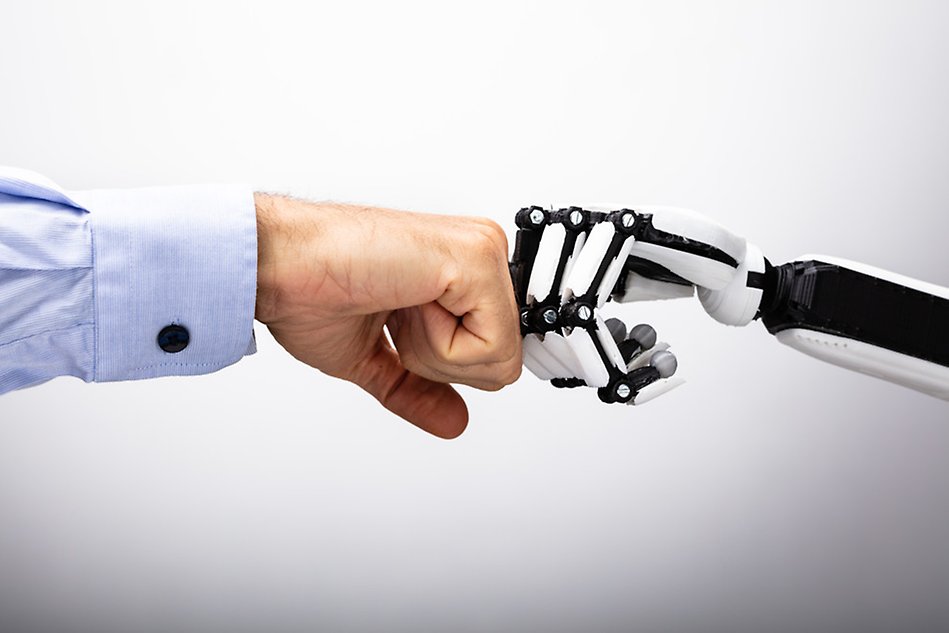School of Information Technology: focusing on future challenges
The School of Information Technology, often referred to as ITE, is one of four Schools at Halmstad University, which together contribute to shaping a strong education and research environment. ITE is especially focused on problem solving for future challenges in informatics and electrical and computer engineering.
This is a personally written text. Any opinions expressed are the author’s own.
“My generation was fascinated by the Commodore 64 and the developments that led to today's smartphones, but what will we be fascinated by in 25 years from now?"
Cristofer Englund, Professor and Dean

This year Halmstad University celebrates its 40th anniversary! In a series of chronicles, you get to follow Halmstad University's 40-year research journey, from no research to research for innovation. In this chronicle, Cristofer Englund, Professor and Dean of the School of Information Technology, talks about information technology's role in education, research and society.
25 years ago, I started studying at the programme Electrical Engineer at Halmstad University. We were 100 students who were thrown into student life. Some were straight out of upper-secondary level, some had done their military service and some had worked for a couple of years, but we all had a common goal: to become an electrical engineer. I had chosen to study both electronics and HTML during upper-secondary level, and had a romantic view of the magic that electronics create.
Being fascinated by electronics, microcomputers, electricity and power in general was not difficult in the late 90s. Computers developed steadily according to Moore's law, that is, the number of transistors per unit area doubled every 18 months, and that meant an ever-improving user experience. I grew up with the Commodore 64 and Amiga 500 and was used to software being saved on cassette tapes or 1.44 MB floppy disks. Sometimes you needed to load 5 to10 floppy disks, and having to wait for 10 minutes before you could start a programme or a game was not uncommon. To enter the world of electronics as a student and to be prepared to start developing processors, programming them and creating circuit boards was almost science fiction.
Education at the turn of the millennium ran in parallel with the IT boom. The internet and mobile telephones thus developed at a furious pace, the need for labour was enormous and many students in engineering programmes got jobs long before they finished their education. There was a broad belief in the technology and when I look back, I can see that it has been a wild journey from mobile phones that were barely mobile, to today's smart watches that we can use for phone calls or even to surf the internet. Add to that virtual reality (VR) which enables experiences of other environments and worlds, or augmented reality (AR) which can project digital objects into the physical world to give instructions or warnings, and the recent hype where software and data are combined in algorithms we call AI or machine learning. With these tools, we can visualise and analyse problems, and software can create ready-made solutions to the problems.

Cristofer Englund. Photo: Dan Bergmark
It is easy to be immersed in and fascinated by digitalisation, and just as easy to forget that it is based on physics, mathematics and signal processing, and throughout the development chain there are electrical engineers who build and programme hardware, develop electrical and power supplies, build systems that connect components or systems, and remove interference from radio waves that penetrate the air.
We should also not forget that alongside product development, there is method development on how the products are created, which further streamlines and speeds up the development process.
A central aspect of development is the interaction between humans and technology. In a digitalised world, it is important to investigate how technology can be adapted to human behaviors, needs and values. Therefore, ITE integrates humanities and social sciences perspectives in technology development and can in this way shape technologies that are user-friendly, ethical and inclusive. Research on social, psychological and cultural aspects of technology helps to create solutions that improve individuals' quality of life and welfare.
Behavioural change is thus a key factor in creating a sustainable society. Here, ITE can play an important role through research and development of strategies to promote sustainable behaviors and lifestyles. By combining insights from law, psychology, sociology and technology, academia can work to identify incentives and influencing factors that can lead to positive change. For example, we can explore how to promote energy efficiency, resource management and sustainable consumption by using behavioural insights to design effective products, services and intervention programmes.
The future is in our hands. The School of Information Technology at Halmstad University educates and shapes the problem solvers of the future that will lead us there. With our broad approach focusing on mathematics, programming, informatics, digital design, electronics and signal processing in combination with ethics, gender equality and sustainability, ITE wants to educate engineers and researchers and form a creative and innovative workplace for students and employees, in order to best create social benefits. Our vision and mission is to educate and nurture future knowledge seekers and creators who, through their holistic perspective, operate in a multidisciplinary and collaborative culture – a culture that is equipped to tackle complex challenges and create innovative solutions. It is these individuals who will be the guiding people of the future, who will navigate us through social change and sustainable development.
My generation was fascinated by the Commodore 64 and the developments that led to today's smartphones, but what will we be fascinated by in 25 years from now?
Cristofer Englund


